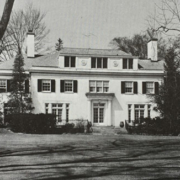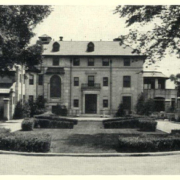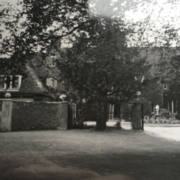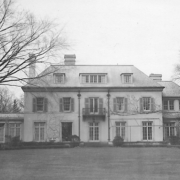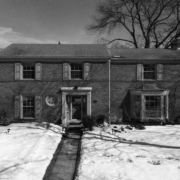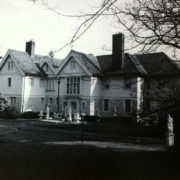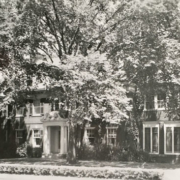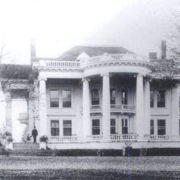Historical Architecture of Grosse Pointe – Dorothy Scherer
Last week focused on the life and career of Hugo Scherer, a prosperous businessman and real estate magnet. He worked closely with architect Louis Kamper on residential and commercial projects and was responsible for expanding the area nicknamed “The Cabbage Patch”, in the early 1900’s.
This week we turn our attention to Hugo’s youngest daughter Dorothy Clara Scherer – a prominent member of society who lived at 191 Lake Shore (later renumbered 201 Lake Shore) – a magnificent estate named “Higbie House”. Image courtesy of the Burton Historical Collection, circa 1926.
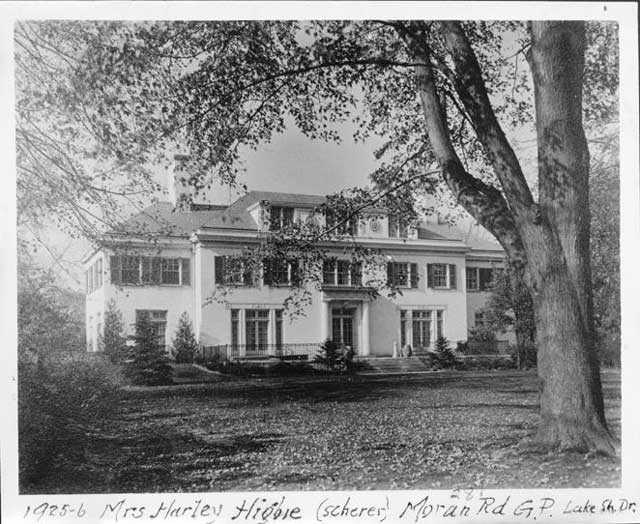
Dorothy Scherer, born 25 June 1901, was reportedly a “high spirited” young lady. We understand she was a gifted sportswoman, and a very talented golfer – she won the Michigan state golf title in the ‘20s, ’30s and ’40s and reportedly had a huge case of trophies in the dining room of “Higbie House”. Source: Grosse Pointe News (12 May 1988). She became the first woman inducted into the Michigan Golf Hall of Fame and qualified for the U.S. Amateur Team 10 times – every time she entered. In 1928, Dorothy was listed in the publication Who’s Who in American Sports. She was also the Country Club of Detroit champion 19 times and a member of the first U.S. Curtis Cup team that played against Great Britain in 1932. Aside from her achievements on the golf course Dorothy volunteered with the American Red Cross and was appointed to the board in 1944. During her time with the organization, it was reported her greatest interest was the Blood Bank Program. Source: Grosse Pointe News (14 May 1987).
Based on an article in Heritage magazine (October 1988) “Dorothy married, met, and fell in love with the dashing Harley Green Higbie, a successful young stockbroker from Chicago, who had come to Detroit on an assignment. The young couple married in 1922. Five years later they moved into “Higbie House”, located at Lakeshore and Moran. The property was located next door to her parents’ home “Scherer House”, the residence in which Dorothy was born and had grown up. (Scherer House was demolished in 1984).
Harley Green Higbie was born in Chicago in 1892. He graduated from the University of Wisconsin in 1917. That same year he joined the army to serve in World War I and was discharged in 1919. Having been based in Louisiana and San Antonio he held the rank of second lieutenant. Following the end of the war it appears he returned to Chicago to enter the banking business before moving to Detroit where he would ultimately become vice president of Keane, Higbie & Company – a firm of investment bankers. He and Dorothy had two children – Harley Jr. (born Oct. 23, 1924) and Hugo Scherer Higbie (HMA’s founder, born April 10, 1927). Image courtesy of: Grosse Pointe News (May 12 1988).

Their home, 191 Lake Shore “Higbie House” was completed in 1926, having been designed by “the dean of Detroit architects”, George D. Mason. It was set on eight and a half acres. The beautiful symmetrical three-story, six-bedroom stucco clad home was designed in the Neo-Classical Revival style. Doric columns supporting a horizontal decorative lintel provided a particularly distinctive entrance. The generous numbers of windows were evenly spaced, giving a classic look to the elegant property that overlooked the lake. The extensive grounds were the location of many oak trees. Source and image courtesy of: Buildings of Detroit, by William Hawkins Ferry.
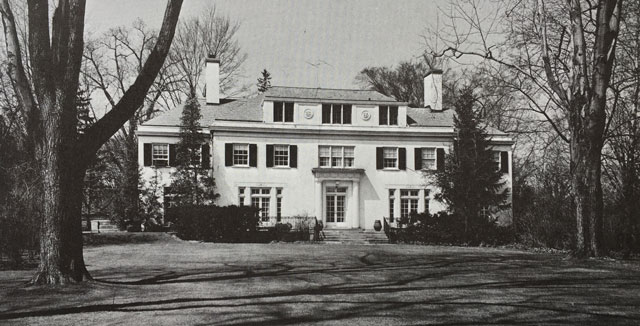
In an article in the Grosse Pointe News (12 May 1988), Dorothy’s grandson Mark Higbie was interviewed and spoke extensively about “Higbie House”. Mark explained “the property was supposed to be a temporary residence for Dorothy and her husband Harley, and it was hastily constructed. It was meant to be moved said Mark Higbie, just picked up off Its foundation and moved onto Moran or Merriweather, on property owned by the family. My grandparents planned to build a larger, more formal stone house in its place said Mark. But after the Depression came, they realigned their priorities, and it became inappropriate to build their dream house.” It was reported in Heritage magazine (October 1988) that over the years, Dorothy Higbie’s flair as a hostess caused the house to constantly ring with music and laughter courtesy of the many parties that were held at the property. Images courtesy of: digitalcollections.detroitpubliclibrary.org
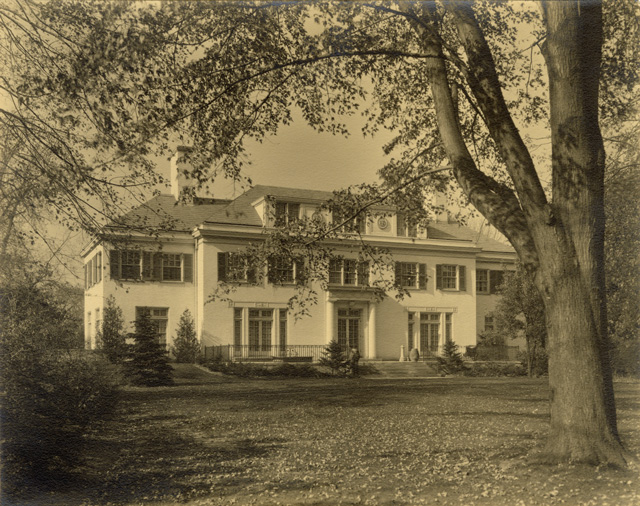
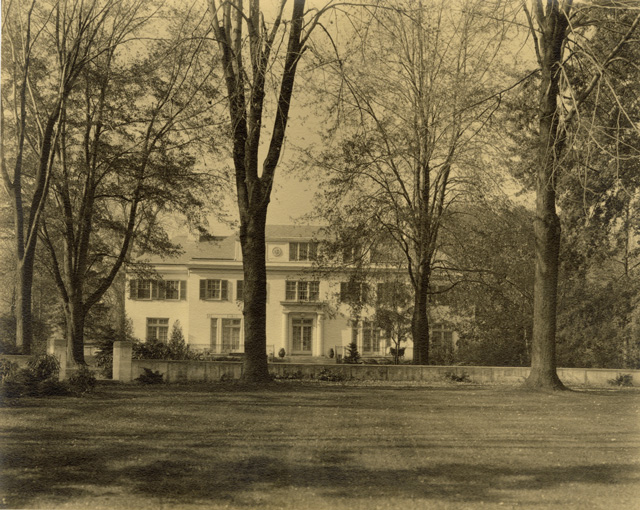
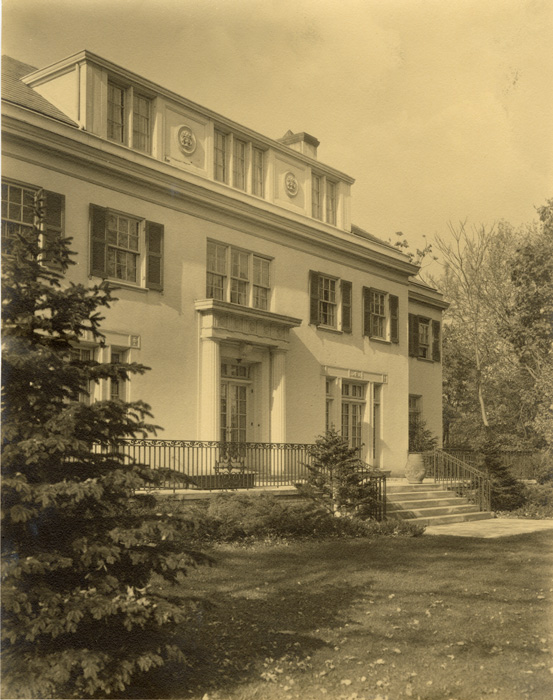
Harley Green Higbie passed on 8 Mar 1970, and Dorothy died on 6 May 1987. It is acknowledged by Mark Higbie in the article (after their deaths) “the family made a genuine, extended effort to sell the house. It was on the market for about a year. If we could have sold the house, we would have.” In the end “Higbie House” was sold to a developer and was demolished in 1988 – the land was sub divided to create space for 16 new homes (the developer planned on saving as many of the large trees as he could) – now the location of Orchard Lane, Scherer Place, and Higbie Court.
Prior to its demolition an estate sale was held at the property. Mark confirmed over 3,000 people attended the two-day sale “they bought mantles, beams, paneling, appliances, clothes, dishes, furniture, and more.” We also understand that since the home was to be demolished, not only were the contents sold but some of the exterior features were removed and sold for installation at other homes.
Dorothy Scherer was an incredible woman. Aside from being a national figure in women’s golf, she was a descendent of one of the oldest and eminently noteworthy families in Detroit, and of course was the mother of HMA’s founder, our very own Hugo Higbie.
*Photos courtesy of the Higbie Maxon Agney archives unless stated.
** Research, information, and data sources are deemed reliable, but accuracy cannot be fully guaranteed.
Written by Katie Doelle
Copyright © 2024 Katie Doelle

